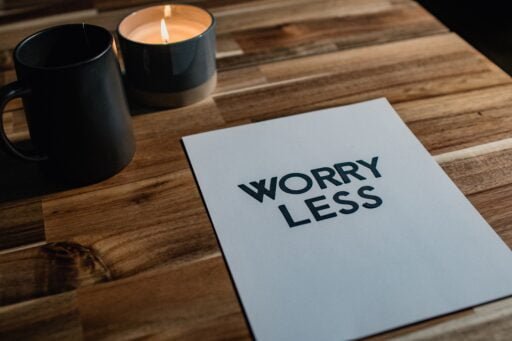If you’ve ever experienced a panic attack, then you know the overwhelming sense of fear and helplessness that washes over you. It can feel as though your mind and body are spiraling out of control, leaving you searching for a lifeline. But fear not, for there are methods to combat panic attacks and regain control over your life. In this article, you will discover practical and empathic strategies that will empower you to face panic attacks head-on, enabling you to find peace and serenity in the midst of chaos. Say goodbye to panic and hello to a sense of calm and inner strength.

Understanding Panic Attacks
Panic attacks are intense bursts of fear or anxiety that can come on suddenly and without warning. During a panic attack, you may experience a rapid heartbeat, shortness of breath, dizziness, and a sense of impending doom. These attacks typically reach their peak within a few minutes and can last anywhere from a few minutes to several hours. It’s important to note that panic attacks are not dangerous, but they can be extremely distressing and disruptive to your daily life.
Causes of Panic Attacks
The exact cause of panic attacks is not known, but experts believe that a combination of biological, genetic, and environmental factors can contribute to their development. Some potential triggers include a family history of panic disorder, certain medical conditions, drug or alcohol abuse, and chronic stress. Additionally, traumatic life events, such as the loss of a loved one or a major life transition, can also increase the likelihood of experiencing panic attacks.
Recognizing the Symptoms of Panic Attacks
Recognizing the symptoms of a panic attack is crucial in order to seek appropriate help and support. Common symptoms include rapid heartbeat, sweating, trembling or shaking, shortness of breath, chest pain or discomfort, feelings of unreality or detachment, fear of losing control or going crazy, and fear of dying. It’s important to remember that everyone’s experience with panic attacks may differ, and not all individuals will experience every symptom. If you frequently experience these symptoms and they significantly impact your daily life, it may be worth considering seeking professional help.
Seeking Professional Help
If you are struggling with panic attacks, it is important to seek professional guidance. Consulting a mental health professional who specializes in anxiety disorders can help you gain a better understanding of your panic attacks and develop effective strategies to manage them. Professional help can provide you with the necessary tools and support to overcome panic attacks and improve your overall well-being.
Importance of Professional Guidance
Professional guidance is crucial when dealing with panic attacks because mental health professionals have the expertise and experience to assess your symptoms, identify any underlying disorders, and develop a personalized treatment plan. They can provide you with appropriate interventions, such as therapy techniques and medications, to alleviate your symptoms. Moreover, they can offer a safe space for you to express your emotions and fears, ensuring that you receive the empathy and understanding you need during this challenging journey.
Finding the Right Therapist
When seeking professional help for panic attacks, it is essential to find the right therapist for you. Consider their credentials, experience, and specialization in treating anxiety and panic disorders. It may also be helpful to read reviews or talk to others who have received treatment from the therapist you are considering. Building a trusting and comfortable therapeutic relationship is crucial for effective treatment, so don’t hesitate to explore different options until you find the therapist who best suits your needs.
Medical Interventions for Panic Attacks
In some cases, medical interventions may be recommended by healthcare professionals to manage panic attacks. Medications, such as selective serotonin reuptake inhibitors (SSRIs) or benzodiazepines, can help reduce the frequency and intensity of panic attacks. It is important to work closely with your doctor to find the appropriate medication and dosage that works best for you. However, it’s worth noting that medication is typically used as a short-term treatment option and should be combined with other therapeutic approaches for optimal results.
Cognitive Behavioral Therapy
Cognitive Behavioral Therapy (CBT) is a widely recognized and evidence-based form of therapy that can be particularly beneficial for individuals experiencing panic attacks. CBT focuses on identifying and challenging negative thoughts and beliefs that contribute to the development and maintenance of panic attacks. By recognizing and reframing distorted thinking patterns, individuals can gain a greater sense of control over their anxiety. CBT also incorporates various techniques, such as relaxation exercises and exposure therapy, to help individuals manage and reduce panic symptoms effectively.
Overview of Cognitive Behavioral Therapy (CBT)
CBT is a goal-oriented and practical approach to therapy that emphasizes the connection between thoughts, feelings, and behaviors. The therapy process involves working collaboratively with a therapist to identify the specific triggers and thought patterns that contribute to panic attacks. By gaining insight into these triggers and thought patterns, individuals can learn to challenge negative beliefs and develop more adaptive coping strategies.
Identifying and Challenging Negative Thoughts
One of the key components of CBT for panic attacks is identifying and challenging negative thoughts. These negative thoughts often involve catastrophizing scenarios or irrational beliefs about danger and harm. By questioning and challenging these thoughts, individuals can begin to recognize their irrationality and replace them with more realistic and rational thoughts. This process helps to reduce anxiety and prevent panic attacks from occurring.
Using Relaxation Techniques
CBT also incorporates relaxation techniques as a way to manage anxiety and cope with panic attacks. Deep breathing exercises, for example, can help calm the body and regulate breathing during moments of heightened anxiety. Progressive muscle relaxation involves tensing and releasing different muscle groups to promote physical relaxation. Visualization techniques, such as imagining a peaceful scene or engaging in guided imagery, can also help redirect the mind away from panic-inducing thoughts.
Developing Coping Strategies
In addition to CBT techniques, developing coping strategies can play a significant role in managing panic attacks. These strategies aim to reduce anxiety and promote a sense of calm during moments of distress. Some commonly used coping strategies include breathing exercises, progressive muscle relaxation, and visualization techniques. Experimenting with different techniques and finding what works best for you is essential for building an effective set of coping strategies.
Breathing Exercises
Deep breathing exercises can be extremely effective in reducing anxiety and panic symptoms. The 4-7-8 technique, for instance, involves inhaling deeply for 4 seconds, holding the breath for 7 seconds, and exhaling slowly for 8 seconds. This technique helps activate the body’s relaxation response and can be practiced whenever you feel the onset of a panic attack. By focusing on your breath and slowing it down, you can help calm the mind and restore a sense of control.
Progressive Muscle Relaxation
Progressive muscle relaxation is a technique that involves tensing and releasing individual muscle groups to promote relaxation and reduce physical tension. Starting from your toes and gradually working your way up to your head, tighten and hold each muscle group for a few seconds before releasing the tension. This technique not only helps you become more aware of physical sensations but also teaches you to recognize and manage muscle tension related to anxiety.
Visualization Techniques
Visualization techniques involve using the power of imagination to create a mental image or scene that induces feelings of relaxation and calm. Close your eyes and imagine yourself in a peaceful, serene setting, such as a tranquil beach or a quiet forest. Engage all your senses and immerse yourself in this mental image, focusing on the sights, sounds, and smells. Visualization can help shift your focus away from panic and bring about a sense of tranquility.
Building a Support System
Building a strong support system is essential when dealing with panic attacks. Sharing your experiences with loved ones can help you feel understood and validated. Friends and family can provide emotional support and offer reassurance during difficult times. Beyond immediate circles, joining support groups or connecting with individuals who have similar experiences can also be highly beneficial. Online resources and forums can provide a safe space to share experiences, gather advice, and gain a sense of belonging.

Sharing with Loved Ones
Sharing your experiences with loved ones can be an important step in seeking support for your panic attacks. Explaining your symptoms and how they affect your daily life can help your loved ones gain a better understanding of what you’re going through. It’s important to communicate your feelings and needs openly, as well as educate your loved ones about panic attacks to dispel any misconceptions. Their support and encouragement can make a significant difference in your journey towards recovery.
Joining Support Groups
Joining support groups specifically for individuals experiencing panic attacks or anxiety disorders can provide a unique sense of community and understanding. In support groups, you can connect with others who have faced similar struggles and share strategies for managing panic attacks. Hearing about others’ experiences and the progress they have made can inspire hope and motivate you to continue your own journey towards recovery.
Online Resources for Panic Attack Support
In addition to in-person support groups, various online resources are available for individuals seeking support for panic attacks. Websites, forums, and online communities dedicated to anxiety and panic disorders can offer a wealth of information, advice, and shared experiences. Engaging with these resources can provide a sense of support and reassurance, even from the comfort of your own home. However, it’s essential to find reputable sources and avoid excessive rumination or comparing your progress to others’.
Lifestyle Changes
Making certain lifestyle changes can significantly contribute to managing panic attacks and reducing their occurrence. Incorporating healthy habits into your daily routine can promote overall well-being and help build a foundation for managing anxiety more effectively.
Regular Exercise
Engaging in regular physical exercise can have a positive impact on both physical and mental health. Exercise releases endorphins, which are natural mood-boosting chemicals in the brain. It also helps reduce stress and tension in the body, promoting relaxation. Find a form of exercise that you enjoy, whether it’s walking, jogging, swimming, or yoga, and aim for at least 30 minutes of moderate-intensity exercise most days of the week.
Healthy Diet
Maintaining a healthy and balanced diet can support overall well-being and help manage anxiety symptoms. Avoid skipping meals, as low blood sugar levels can trigger panic attacks. Focus on consuming nutrient-dense foods, such as fruits, vegetables, whole grains, lean proteins, and healthy fats. Limit your intake of caffeine, sugar, and processed foods, as these can exacerbate anxiety symptoms.
Adequate Sleep
Getting enough quality sleep is essential for managing anxiety and reducing the likelihood of panic attacks. Establish a consistent sleep schedule by going to bed and waking up at the same time each day. Create a relaxing bedtime routine, such as taking a warm bath, reading a book, or practicing deep breathing exercises. Avoid stimulating activities and electronic devices close to bedtime, as they can interfere with your ability to fall asleep.
Stress Management Techniques
Practicing stress management techniques can significantly contribute to managing panic attacks and reducing their impact on your life. These techniques focus on promoting relaxation, mindfulness, and a balanced lifestyle.

Practice Meditation and Mindfulness
Meditation and mindfulness exercises can help calm the mind and reduce anxiety. Find a quiet and comfortable space, close your eyes, and focus your attention on your breath or a specific sensation. Allow thoughts to come and go without judgment or attachment. Engaging in daily meditation or mindfulness practices can help you cultivate a greater sense of calm and present moment awareness.
Engage in Hobbies and Leisure Activities
Engaging in hobbies and leisure activities that bring you joy and relaxation can serve as a much-needed distraction from panic attacks. Find activities that you enjoy and make time for them regularly. Whether it’s painting, gardening, playing an instrument, or simply going for a walk in nature, immersing yourself in activities that bring you happiness can help reduce stress and promote a sense of fulfillment.
Establish a Balanced Work-Life Routine
Creating a balanced work-life routine is essential for managing stress and promoting overall well-being. Set boundaries between work and personal life, ensuring that you have designated relaxation time. Prioritize self-care activities, such as engaging in hobbies, spending time with loved ones, and practicing relaxation techniques. By establishing a healthy balance, you can reduce the risk of burnout and effectively manage anxiety.
Avoiding Triggers
Identifying and avoiding personal triggers can be instrumental in preventing panic attacks. A trigger is anything that brings about a heightened sense of anxiety or panic. Common triggers include specific situations, places, or even certain thoughts or memories. By becoming aware of your triggers, you can develop a plan to avoid or manage them effectively.
Identifying Personal Triggers
Take time to reflect on situations or factors that have triggered panic attacks in the past. It could be crowded spaces, social interactions, public speaking, or even certain smells or sounds. Keep a diary of your panic attacks to help you identify patterns and potential triggers. becoming aware of your triggers can empower you to take proactive steps towards avoiding or managing them more effectively.
Creating a Trigger Avoidance Plan
Once you have identified your triggers, develop a trigger avoidance plan tailored to your specific needs. This plan may involve modifying your environment, avoiding certain situations or activities, or developing coping strategies to handle trigger situations more effectively. Discuss your trigger avoidance plan with your therapist or support system to ensure that you receive the necessary guidance and support.
Managing Exposure to Triggers
While avoiding triggers is important, gradually exposing yourself to them in a controlled manner can also be beneficial. This technique, known as exposure therapy, involves gradually facing your fears and triggers in a safe and structured manner. Working with a therapist, you can develop a hierarchy of exposure, starting with less intimidating triggers and gradually progressing to more challenging ones. This gradual exposure can help desensitize you to the triggers and reduce their power over you.
Self-Care Practices
Engaging in regular self-care practices is vital for managing panic attacks and maintaining overall well-being. Prioritizing your physical, emotional, and mental health is essential for reducing stress and promoting a sense of calm.
Prioritizing Self-Care
Make self-care a priority in your daily life. This may involve setting aside time each day for activities that bring you joy and relaxation, such as reading a book, taking a bubble bath, or listening to music. Remember that taking care of yourself is not selfish but rather necessary for your well-being.
Engaging in Relaxation Activities
Engage in activities that promote relaxation and reduce stress. This could include practicing yoga, taking a walk in nature, enjoying a warm bath, or practicing deep breathing exercises. Experiment with different relaxation activities to find what works best for you and incorporate them into your daily routine.
Setting Boundaries and Saying No
Setting boundaries in your personal and professional life is crucial for managing stress and preventing burnout. Learn to assertively communicate your needs and limitations, and don’t be afraid to say no when necessary. By setting clear boundaries, you can focus on your well-being and prevent unnecessary stress from triggering panic attacks.
Maintaining a Panic Diary
Keeping a panic diary can provide valuable insights into your panic attacks, helping you identify patterns, triggers, and symptoms. By recording your experiences, you can gain a deeper understanding of your panic attacks and track your progress over time.
Recording Panic Attack Experiences
Record details of your panic attacks in a panic diary. Include information such as the date and time of the attack, the setting, your emotional state before and after the attack, and any specific triggers or symptoms you experienced. This record can help you identify common patterns or trigger situations that contribute to your panic attacks.
Tracking Potential Triggers and Symptoms
Use your panic diary to track potential triggers and symptoms related to your panic attacks. Note any situations, thoughts, or physiological sensations that you believe may have contributed to the panic attack. This information can help you identify specific triggers and develop strategies for managing or avoiding them in the future.
Analyzing Patterns and Progress
Regularly review your panic diary to analyze patterns and track your progress. Look for any recurring triggers or common symptoms that may provide insight into the underlying causes of your panic attacks. Additionally, pay attention to any improvements or changes in frequency or intensity of your panic attacks. This analysis can help you and your therapist identify effective strategies and interventions for managing your panic attacks.